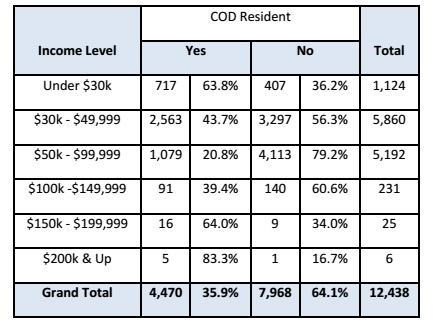 Because I know you all can’t get enough of talk about municipal worker salaries, this morning I read more interesting data regarding the residency of city of Dallas employees. It was contained in a memo packet that was distributed to Dallas City Council members on Friday.
Because I know you all can’t get enough of talk about municipal worker salaries, this morning I read more interesting data regarding the residency of city of Dallas employees. It was contained in a memo packet that was distributed to Dallas City Council members on Friday.
You already know that a relatively small percentage of Dallas cops live within the city limits and that only 36 percent of all city workers are Dallasites. This new information points to the fact that, as City Councilman Philip Kingston noted to me, “We seem to do worst with our middle income earners.”
More than 63 percent of city workers who earn less than $30,000 annually live in Dallas, while more than half of those in the lower-middle class range ($30K-$50K) don’t. Among the upper-middle classes ($50K-$150K), 78.4 percent are suburbanites.
Once salaries climb into the range that makes workers part of our nation’s top 5-percenters, things shift back in a big way, with 68 percent of those with the biggest paychecks living in Dallas. Of course, that number gets a bit skewed since there are relatively few of them and some are required by the city charter to live in Dallas.
So should anything be done about this? Can anything be done? I learned from this same memo that state law prohibits the city from requiring residency for any employees other than the city manager, secretary, auditor, attorney, city council appointees, and municipal judges.





